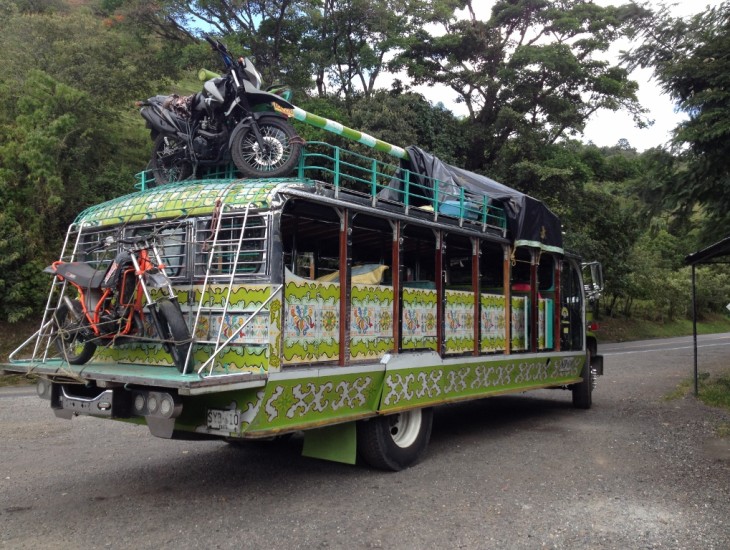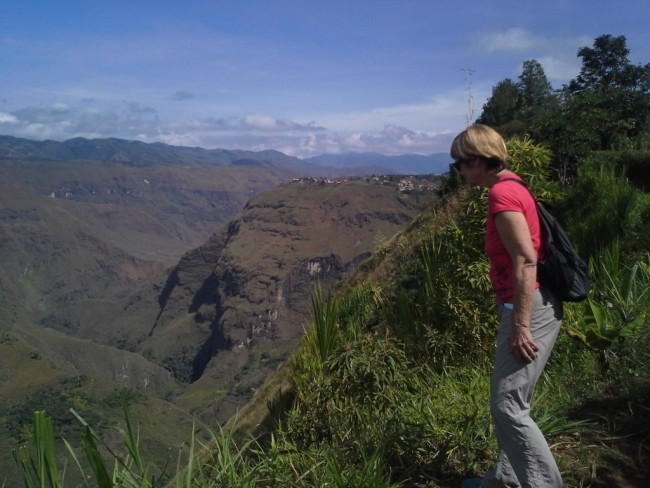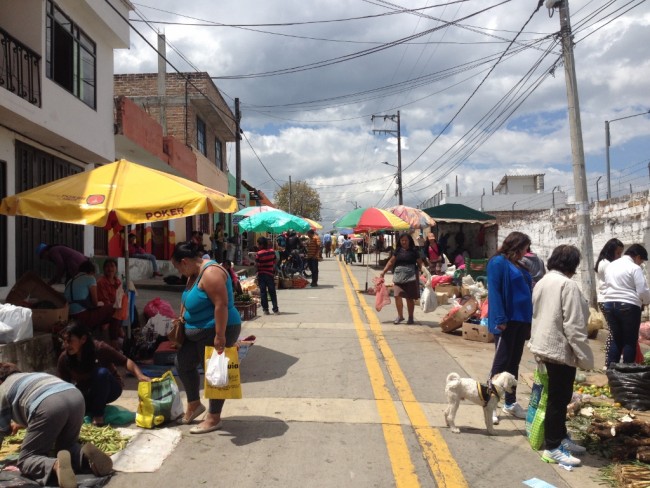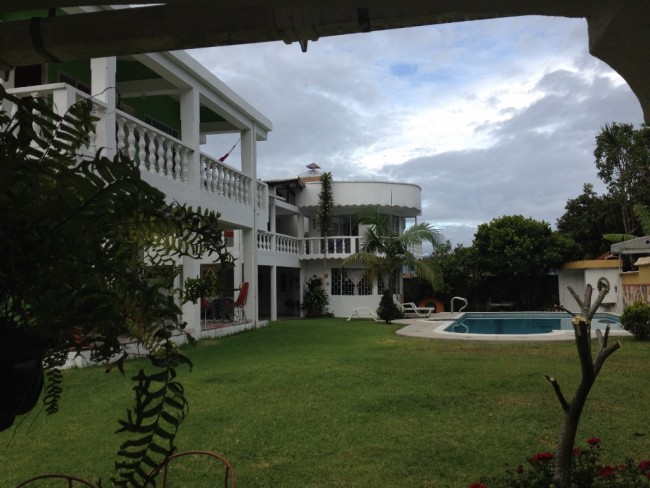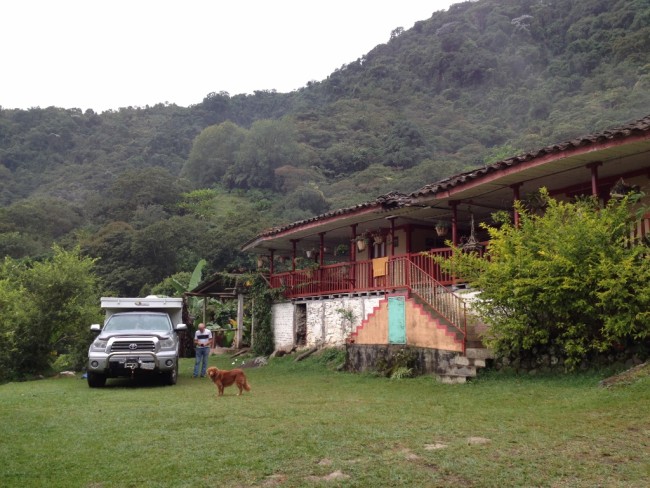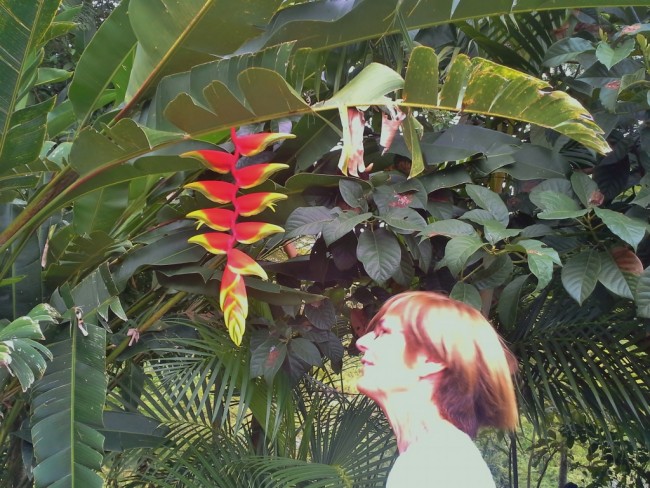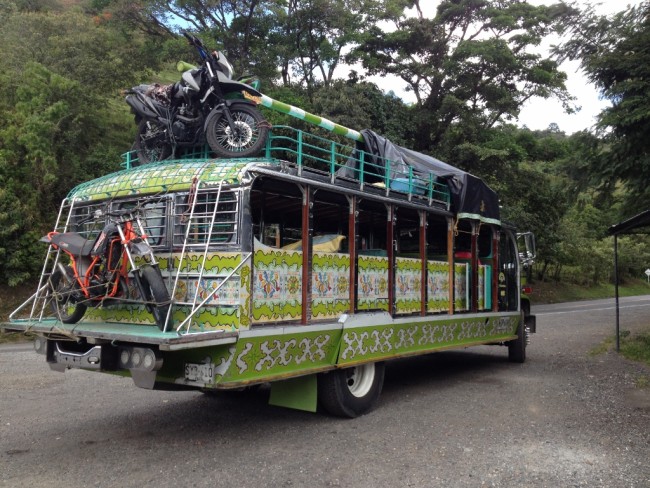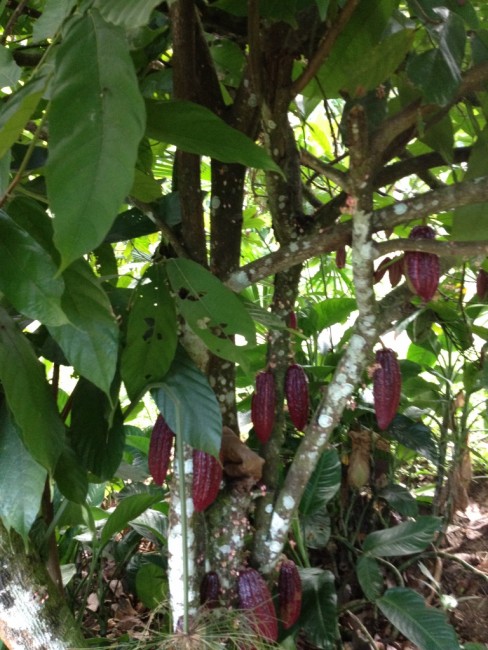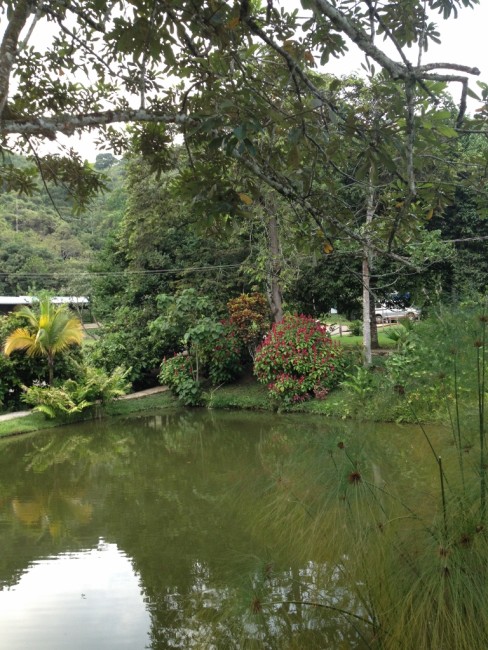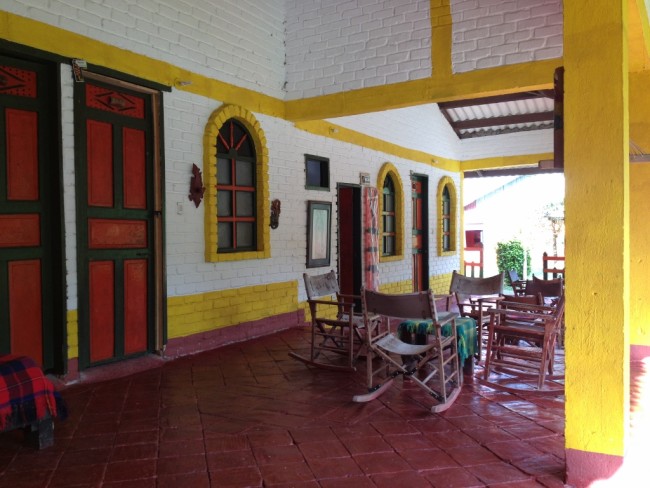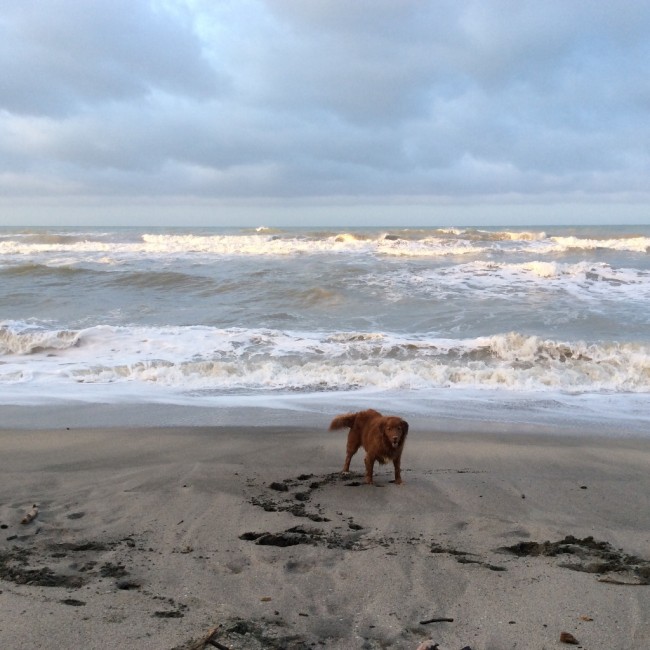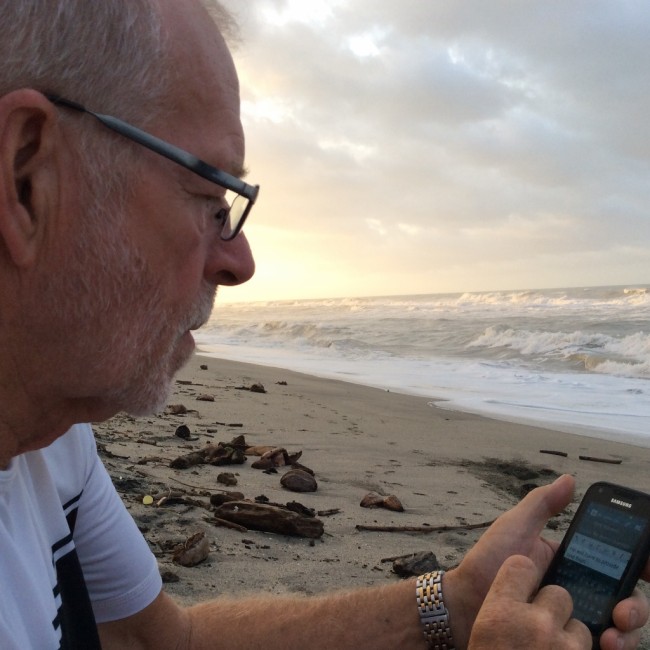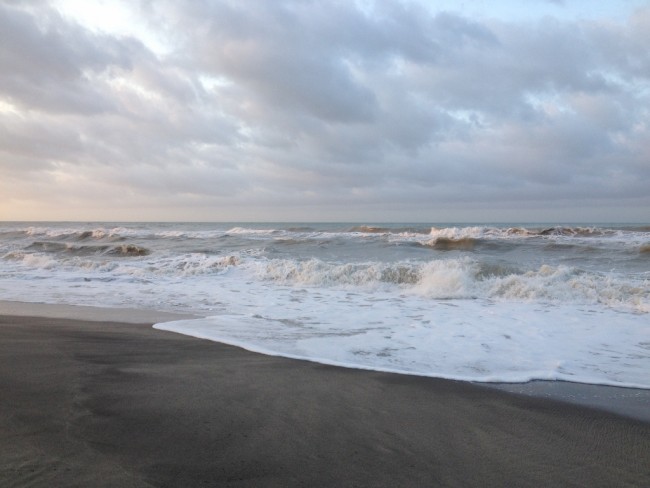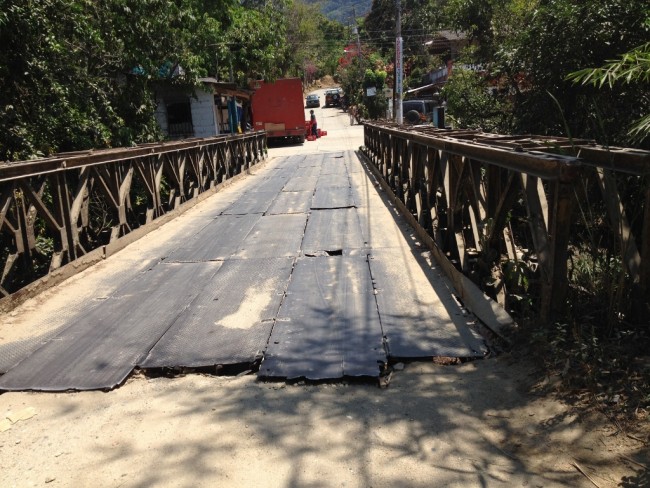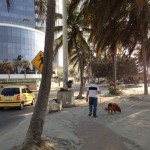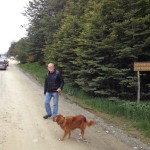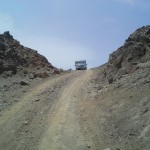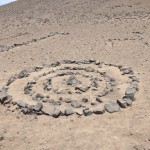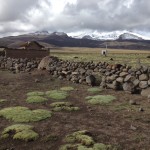Chachagui is a little village in southern Colombia. The Hostel Kundour is located just below the village. It is owned by a Basque expatriate and his Colombian wife, and in the year it has been open he has made it into an amazingly welcoming spot. When we arrived, after driving down a narrow steep road and into his garden, our brakes failed. Carlos, the owner, pointed out that Bill had managed to stop the truck just inches from his bedroom window, and then called his favourite mechanic to help us. The problem was diagnosed, and rectified within an hour of our arriving. The view from the Hostel is fantastic, and a short path takes you to a cliff edge, where, about 1000 feet below, a river gurgles and roars. The sound rises with the warm air.
A little further is the village, and we were there on a market day.
We spent some time exploring the village and sometime relaxing by the pool and stayed a second night.
The best? only? spot to camp near Cali is at Pance, a little village on a rushing river. We stayed there on our trip south, at the Finca Bellavista. It’s located above the village on a steep, rough, narrow road. We’d noticed the village was a little touristy but it had been very quiet. This time, when we arrived, the area was experiencing a severe thunder and rain storms. Cars and motorcycles, and their drenched passengers, were lined up for miles from Pance to Cali. It was like the entire population of Cali had been in Pance and wanted to leave. Near the village the road was total chaos. Wet t-shirts were everywhere, cars, taxis, pedestrians, buses, motor bikes and yet more pedestrians, all determined to get downhill and back to Cali. What had been a sleepy little lane was now a traffic jam. Shortly after everything had come to a complete stop, a traffic cop appeared, biked into the mess and started things moving again. We arrived at the Finca near dark, set up the camper in between thundershowers and left early the next morning.
This trip we took a more easterly route through the northern half of Colombia, through the lowlands between the mountain ranges, hoping for and finding straighter roads. Even so, our average speed was about 30 mph. Compared to further south and the more westerly route, there were fewer soldiers stationed along the roads and less sandbagged bastions. Our guidebook tells us 10 percent of Colombia’s population has been displaced by the conflicts within the country. We drove past one deserted village and wondered if the reason the townsfolk left was economic or political. In all our driving we have yet to see any unrest.
We often just pull over for lunch, stretching our legs while eating sandwiches thrown together in our camper. This time we stopped at a roadside restaurant, where we were offered meat, fish or chicken. We chose chicken. A Colombian meal typically consists of soup with corn, potatoes and meat, fish or chicken and a little coriander, followed by a plate of rice, fried plantain, a small salad and meat, fish or chicken. Good, basic and somewhat repetitive. At the restaurant we spotted a typical Colombian chivas, a bus with rows of bench seats each with its own door. In Cartagena they are used as party buses, roaming the streets full of people drumming and singing. In the mountains they are used for transport.
Santafe Guaduales, located near Ibague, is billed as an ecohostel. There are trails nearby and signs identifying the plants.
When we arrived, the manager offered us a tinto, a small cup of dark rich coffee sweetened with sugar. Thus fortified, we camped in their parking lot, surrounded by chickens, turkeys, guinea fowl and jungle. A Blackhawk helicopter patrolled overhead, crossing over us about once an hour.
Next day we drove again, ending up in the non-tourist town of Aguachica. Neither the hotel nor the town were places to remember. We dined on left over chili warmed up on our camp stove in our room, slept and hit the road again in the morning. We ate a couple of empanadas for breakfast at a gas station/ bus stop café and drove to the Atlantic coast.
Approaching the coast we drove past a village whose economy was based on gasoline smuggled from Venezuela. Hundreds of little huts with gas cans, drums of gas, plastic totes of gas and buckets of gas lined the highway. The vendors waved funnels to get our attention. The air smelled of gas. We drove through without stopping. Slightly beyond the village was a government sponsored sign denouncing smuggling.
Costeno Beach Surf Camp EcoLodge was on the coast. The place is a hostel, offering beach huts, hammocks, rooms, dorms or, in our case, camping in the parking lot. They have a small restaurant where guests sit at two long tables. The food is very good and the atmosphere is friendly. Capi was welcome and made friends quickly. Although the surf was too rough and the cross currents too dangerous for swimming, she was happy to chase sticks for hours in the breakers.
Between conversations with other travelers, including two men from Victoria, and walks on the beach, we managed to while away two days.
While Bill used up his data package, Nancy took a video. Breathe….
Minca is a bird watching town about 2000 feet up in the mountains behind Santa Marta . We drove there looking for a cool spot for us and the dog.
It was warmer in Minca than on the coast, and our outside air thermometer read 95 degrees F. We camped at a small hostel behind the village and admired the view. Somehow we missed seeing the toucans, but we did get internet, for the first time in several days. The internet quit but not before we received the information that Capi had to be inspected by a vet for another health certificate, and her import papers for Panama had to be stamped by the Panamanian Consulate located in Baranquilla, after they were issued by the Colombian inspectors in Cartagena. Barranquilla is a 2 ½ hour drive from Cartagena, and, as we were booked on the ferry on Tuesday and it was already the weekend and we were running out of time, we made a beeline for Cartagena and the very excellent people and pet friendly Pueblito Playa Hotel. And then the fun began.

